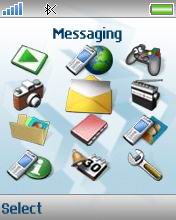
The mobile phone has become the device most people turn to in an emergency. Mobile networks experience huge increases in traffic immediately following a disaster and high-levels of demand continue for many days afterwards, according to data in a study published by the GSM Association (GSMA), the trade association representing mobile operators worldwide.
The study by Enlightenment Economics shows how call volumes in Tamil Nadu, in southern India, for example, were up to 30% higher than normal levels for several weeks after the Tsunami last year struck that region. Similarly, voice usage soared 275% and text volumes by 350% in the areas most affected by the flooding in southern Germany in August 2005. Call volumes also rose dramatically following the bombings in Istanbul in November 2003.
Importantly, while mobile phone operators experience similar surges on New Year's Eve or on the occasion of a big football match, in a disaster situation they usually have little time to prepare. If users send text messages in the immediate aftermath of a disaster, rather than make voice calls, they use less network capacity, making it more likely their message will get through, and freeing up bandwidth for the emergency services.
"Anyone caught up in a natural disaster or other emergency is understandably desperate to reach their loved ones, call for help or pass on important information," said Tom Phillips, Chief Regulatory and Government Affairs Officer of the GSMA. "Mobile phones are the best way to do that, but people in a disaster zone should try to text, not talk."
Traffic data after disasters suggests that aid agencies and individuals caught up in the mayhem both rely heavily on mobile networks to find out information specific to their needs. The study, which examines communication patterns after the Tsunami in the Indian Ocean, Hurricane Katrina, the Bam Earthquake and several other catastrophes, found that mobile phones play a vital role in reconnecting dispersed people and efficiently matching aid to the particular needs of affected communities.
After a natural disaster, the study found that mobile phone networks can often recover faster than fixed networks. Following Hurricane Katrina in the U.S., for example, the use of portable base stations allowed operators to restore coverage relatively quickly. Where necessary, mobile operators can also often reroute calls around network problems. In cases of extreme congestion, operators sometimes reduce audio quality so that more calls get through.
Download the report here











 RSS feed
RSS feed